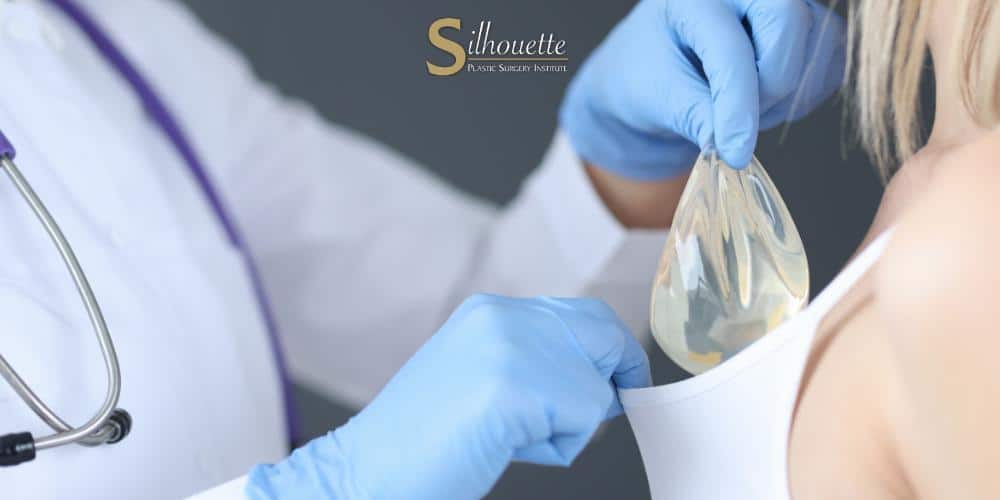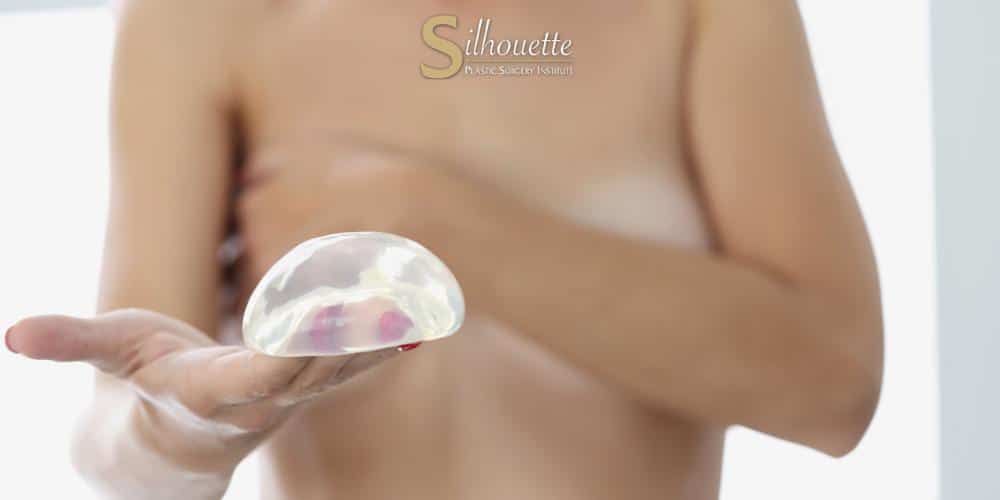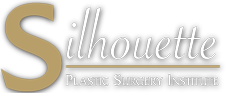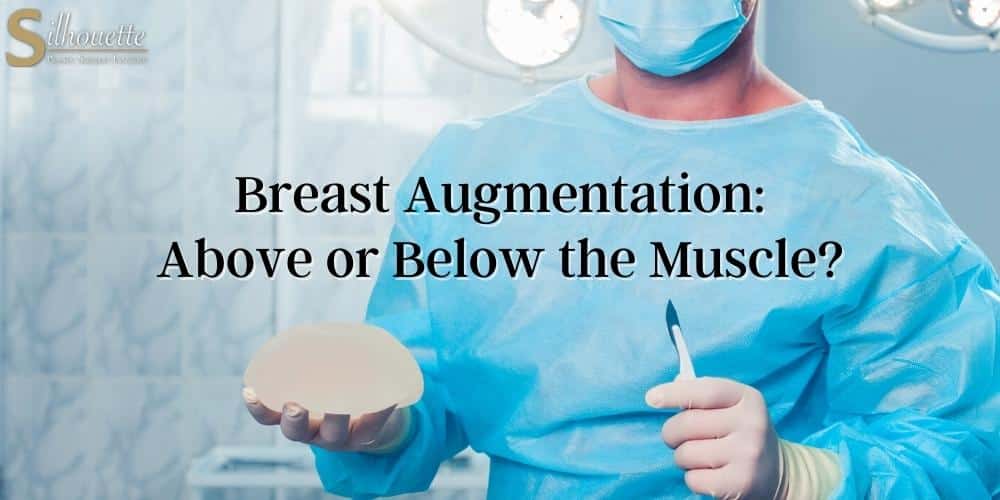Breast augmentation surgery is one of the top 5 most common cosmetic procedures in the U.S. every year. There are several factors to consider before undergoing this popular procedure, though, like what size implants? What type of implants? Above or below the pectoralis muscle? Placing implants above or below the muscle depends on a variety of factors, such as how much breast tissue a patient has, what size and type of implants a patient chooses, their aesthetic goals, and so much more. In this blog, board certified plastic surgeon Dr. Daneshmand discusses the details of breast augmentation: above or below muscle.
If you’re ready to enhance your natural breasts through breast augmentation surgery, call Silhouette Plastic Surgery Institute at 949-359-8397 today.
What is Breast Augmentation?
Breast augmentation is a cosmetic surgery that can give patients the breast shape and size that they desire with the help of saline, silicone, or gummy bear implants. Breast augmentations were among the top five most common cosmetic surgeries performed in the United States in 2020. Data from the American Society of Plastic Surgeons states that more than 193,000 breast augmentations were performed that year alone.
Over the Muscle Implant Pros and Cons
Breast implant placement above or below the pectoralis major muscle can really make or break the results of a breast augmentation. Above the muscle implants – also known as subglandular breast implants – are placed below the glandular breast tissue but above the pectoral muscle. Above the muscle breast implants are ideal for patients who already have a large amount of breast tissue.
Below, we list the pros and cons of subglandular implants.
Benefits of Over the Muscle Breast Implants
- Subglandular implant placement can create a more “lifted” appearance, especially if the patient had visibly saggy breasts before surgery.
- Many patients find that placing breast implants above the chest muscle also produces the most natural-looking result.
- There is little to no dynamic distortion. In other words, breast implants won’t flatten or move around the chest wall when the chest muscle contracts.
- Less post-operative discomfort and a quicker recovery time.
- Patients will experience no loss in chest muscle strength.
- This type of implant placement can easily accommodate larger implants.
Problems With Breast Implants Under the Muscle
- There is a significantly higher risk of capsular contracture, which is when a capsule of scar tissue forms around the implant. This will cause one or both breasts to look distorted. Patients with capsular contracture will need breast revision surgery.
- There is an increased risk of rippling, especially when patients have minimal breast tissue. Rippling occurs when there are visible folds in the breast implants. Patients can often feel these folds through their skin.
- Above the muscle breast implants may make it more challenging to see glandular tissue in mammograms. Therefore, doctors may struggle to spot and diagnose breast cancer.

Under the Muscle Breast Implants
Breast implants placed under the muscle – also known as submuscular implants – are those that are placed below the breast tissue and the pectoralis major muscle. Submuscular placement is generally more common during breast augmentation because most patients have very little breast tissue to begin with.
Below, we list the pros and cons of placing implants under the muscle.
Benefits of Under Muscle Breast Implant
- There is a lower risk of capsular contracture and rippling.
- Patients generally have a more natural breast contour, especially if they have very little natural breast tissue.
- It’s much easier to spot and diagnose breast cancer during a mammogram.
Problems With Breast Implants Under the Muscle
- There is a higher risk of dynamic distortion, which means your breast implants may shift when you flex your chest muscles.
- There is a higher risk of breast implant displacement, which means the breast implants move to a place in the chest wall where they’re not supposed to be. This complication is often referred to as a “double bubble,” because the displacement makes it look like there is breast tissue below the normal inframammary crease.
- Many patients experience more post-operative discomfort and a longer recovery time because the plastic surgeon had to take a more invasive approach in order to place the breast implant underneath the pectoralis major muscle.
- Patients may experience diminished strength in chest muscles, especially athletes.
Implant Placement
Both submuscular and subglandular placement of breast implants are medically safe. However, the decision of breast implant placement often boils down to several factors, including how much natural breast tissue the patient has, implant size, implant type, and the patient’s aesthetic goals.
How Much Natural Breast Tissue You Have
How much natural tissue you have in your breasts is a huge determinant in breast implant placement. Thin patients with smaller breasts may not be the best candidates for subglandular breast implants because there will be less implant coverage. In other words, thin patients with little natural breast tissue will have a higher risk of visible rippling.
Similarly, women with large and/or strong chest muscles (i.e. athletes) may not be good candidates for under the muscle placement because they will have a higher risk of distortion.
Basic Pinch Test
Dr. Daneshmand can help patients determine which kind of implant placement is best for their bodies through a basic pinch test and a physical exam. You could even do the pinch test on yourself to figure out if subglandular or submuscular placement is best for you. This is how the pinch test works: just pinch the skin in your upper breast (upper pole) with your thumb and pointer finger.
If you were able to pinch more than 2 centimeters of breast tissue, then you may be a good candidate for both types of implant position. Meanwhile, pinching less than 2 centimeters of breast tissue indicates that you may not have enough soft tissue in your natural breasts for subglandular placement. So your plastic surgeon may recommend placing your implants under the muscle.
Implant Size
Another factor to consider when deciding whether to place implants above or below the pectoral muscle is implant size. As a general rule of thumb, larger implants carry an increased risk of rippling. So larger implants are often ideal for patients with more breast tissue, because there is more soft tissue coverage and a lower chance of rippling.
Patients with less breast tissue who want larger implants – like size D implants – may benefit more from under the muscle placement. On the other hand, patients with more natural tissue who want large implants may benefit from subglandular placement.
Saline vs. Silicone Implants
Silicone implants generally carry a lower risk of rippling compared to saline implants. Plastic surgeons will take this fact into account when deciding between over or under the muscle placement.
Your Aesthetic Goals and Your Lifestyle
Lastly, Dr. Daneshmand will definitely keep your aesthetic goals and lifestyle in mind when determining the best type of implant placement for you. Submuscular and subglandular placement produce different aesthetic results once a patient is fully healed, especially depending on implant size and type.
Also, a patient’s level of athleticism is important to keep in mind when placing implants above or below the chest muscle. Athletes may be better suited for subglandular placement while non-athletes may be better suited for submuscular placement.

Breast Augmentation Surgeon in Bakersfield and Orange County
There is a lot to consider before undergoing breast augmentation surgery: silicone or saline breast implants? Above or below the muscle implants? Board certified plastic surgeon, Dr. Daneshmand, can help you narrow down these options in a one on one consultation. Call 949-359-8397 to schedule an appointment at Silhouette Plastic Surgery Institute today.

